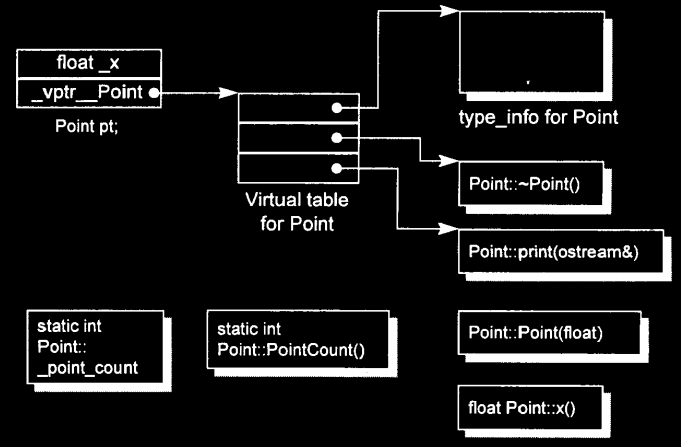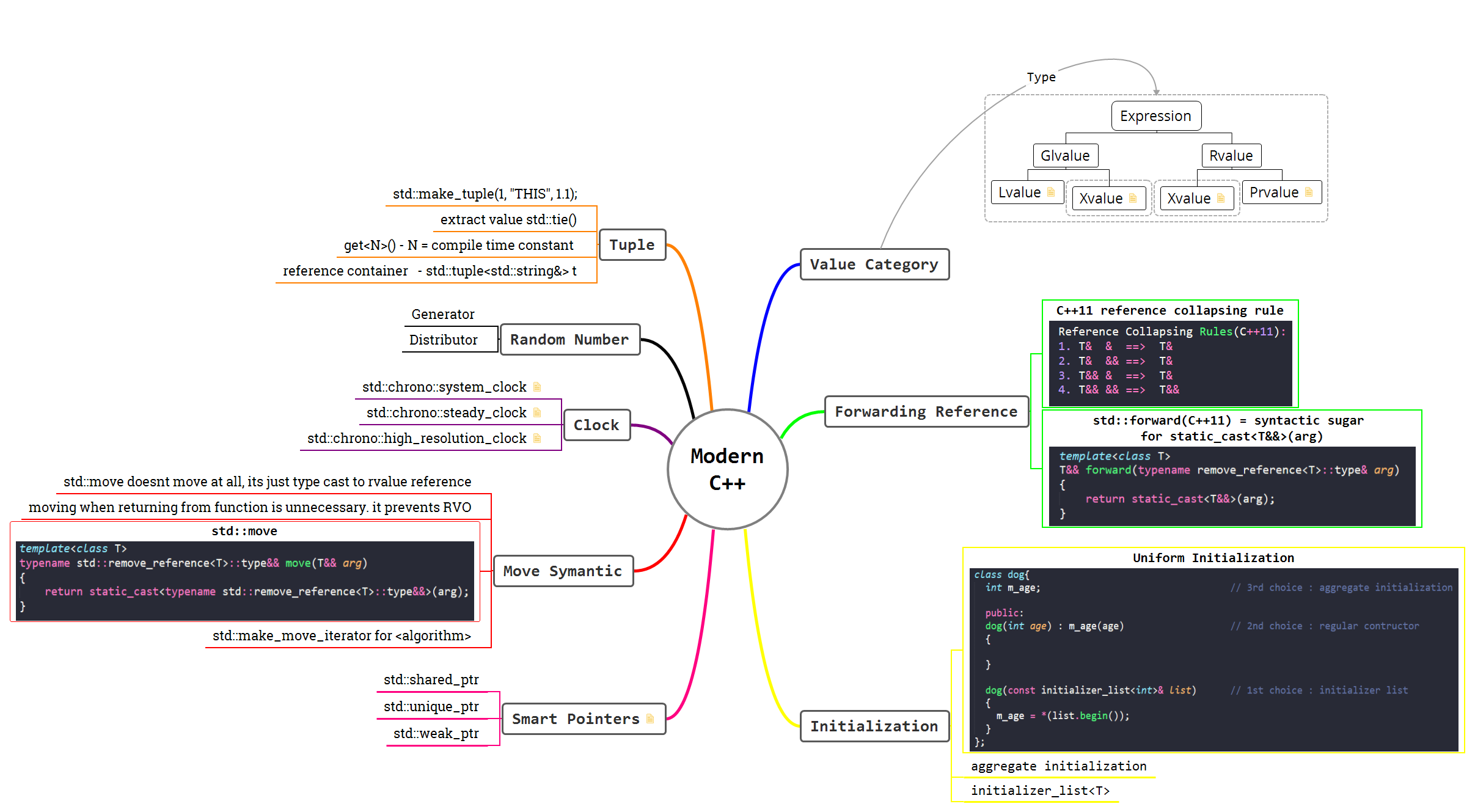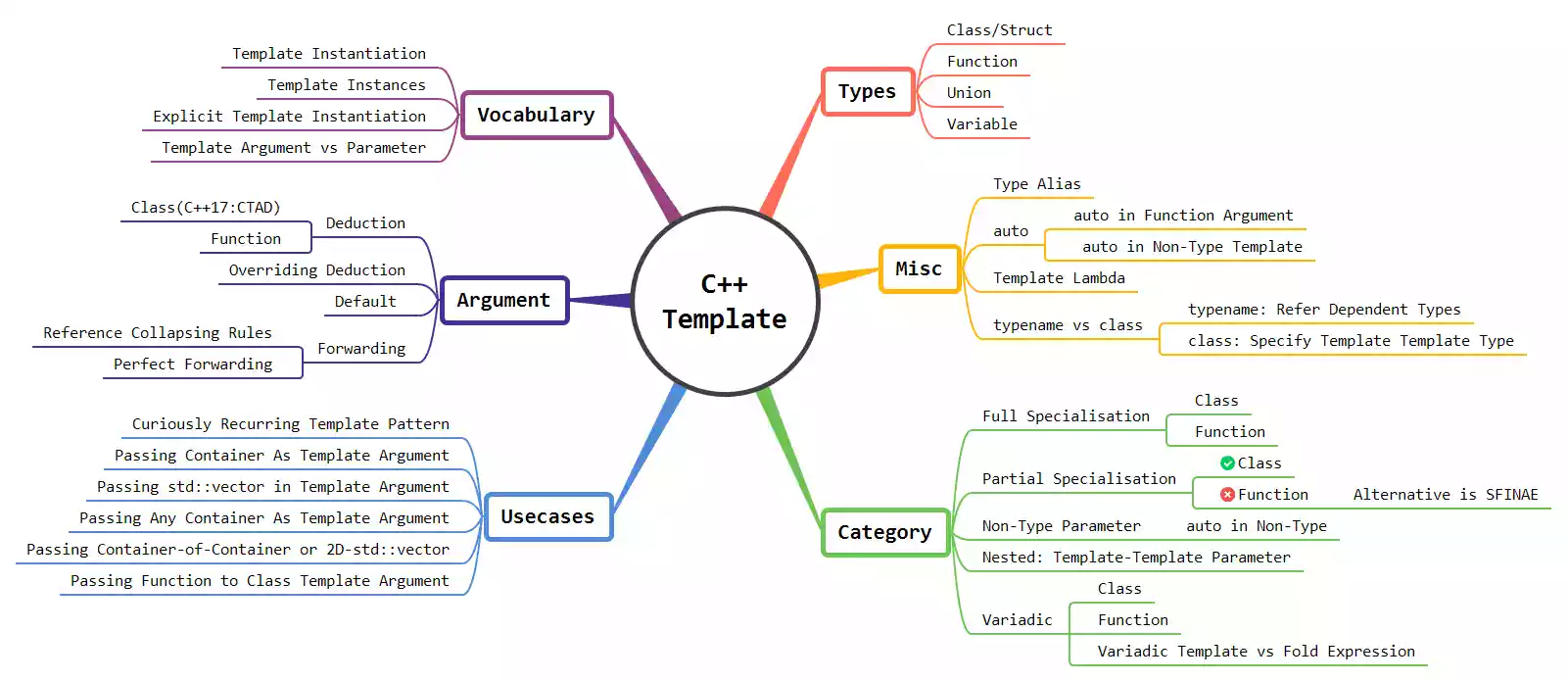This article is the collection of concept I have acquired while introducing myself to C++ by googling here & there. This material is also not in order. I have just collected the answer to my quick question. And write it down here. But one thing I can assure you is that once you go through this article. You can connect many broken thought of understanding on what runs “Inside the C++ object model”. And why people call it as it runs C internally.
Note: In addition, here I have not considered name mangling & other compiler attributes for simplicity. Also not shown how object memory layout created. So, I have discussed it here. Code augmentation depends on compiler implementation, there is no such standard define.
Contents
- 1 Default Member-Functions Created by the Compiler Inside the C++ Object Model
- 2 How C++ Object Model Used in Function?
- 3 How Class/Object-Oriented Code Transformed Into Sequential Code?
- 4 How & Where Constructor Code Transform/Synthesize With Inheritance & Composition Class?
- 5 How & Where Destructor Code Transform/Synthesize With Inheritance & Composition Class?
- 6 How & Where Virtual Table Code Will Be Inserted?
- 7 Reference
Default Member-Functions Created by the Compiler Inside the C++ Object Model
Suppose you have declared class like:
class Thing {};
- The compiler will probably synthesize this class as:
class Thing {
public:
Thing(); // default constructor
Thing(const Thing&); // copy c'tor
Thing& operator=(const Thing&); // copy-assign
~Thing(); // d'tor
// C++11:
Thing(Thing&&); // move c'tor
Thing& operator=(Thing&&); // move-assign
};
- So by default compiler will generate:
- default constructor
- copy constructor
- copy-assign operator
- destructor
- move constructor
- move-assign operator
Note: This stands true till C++ 14.
- The compiler creates all default/implicitly-declared member-functions when it needed. A compiler cannot create default member-functions when it’s no use.
How C++ Object Model Used in Function?
- Given the following function, where
class Xdefines a copy constructor, virtual destructor, and virtual functionfoo():
X foobar()
{
X xx;
X *px = new X;
// foo() is virtual function
xx.foo();
px->foo();
delete px;
return xx;
};
- The probable compiler transformation would be:
void foobar(X &result) {
X::X(&result); // Constructor call, NRVO
px = _new(sizeof(X)); // expand X *px = new X;
if (px != 0)
px->X::X();
foo(&result); // xx.foo(): replaced xx with result
(*px->_vtbl[2])(px); // px->foo(): using dynamic dispatch
// Expand delete px;
if (px != 0) {
(*px->_vtbl[1])(px); // Virtual destructor
_delete(px);
}
// replace named return statement
// no need to destroy local object xx
return;
};
- This is how the object-oriented paradigm converted into the procedure-oriented paradigm.
How Class/Object-Oriented Code Transformed Into Sequential Code?
- Let’s take the following example to understand it:
struct foo
{
int m_var;
public:
void print()
{
cout << m_var << endl;
}
};
- The compiler treats this as :
struct foo
{
int m_var;
};
void foo::print(foo *this)
{
std::cout.operator<<(this->m_var).operator<<(std::endl);
}
- As you can see above, objects & methods are a separate entity. An object only represents data members.
- Therefore, all the methods in class/struct contain implicit
thispointer as the first argument using which all non-static data members are accessed. - Static data members are not part of class/struct. Because it usually resides in a data segment of memory layout. So it accesses directly(or using segment registers).
- So this is the reason if you print the size of the above class. Hence, It prints 4 because all methods are a separate entity which operates on the object by using implicit
thispointer.
How & Where Constructor Code Transform/Synthesize With Inheritance & Composition Class?
class Foo
{
public:
Foo(){cout<<"Foo"<<endl;}
~Foo(){cout<<"~Foo"<<endl;}
};
class base
{
public:
base(){cout<<"base"<<endl;}
~base(){cout<<"~base"<<endl;}
};
class Bar /* : public base */
{
Foo foo;
char *str;
public:
Bar()
{
cout<<"Bar"<<endl;
str = 0;
}
~Bar(){cout<<"~Bar"<<endl;}
};
- Compiler augmented
Barconstructor would look like:
Bar::Bar()
{
foo.Foo::Foo(); // augmented compiler code
cout<<"Bar"<<endl; // explicit user code
str = 0; // explicit user code
}
- Similarly, multiple class member objects require a constructor initialization. The language specifies that the constructors would be invoked in the order of member declaration within the class. This is accomplished by the compiler.
- But, if an object member does not define a default constructor, a non-trivial default constructor synthesizes by a compiler for respective classes.
- Moreover, in the case of inheritance, the constructor calling sequence starts from base(top-down) to derived manner. Constructor synthesis & augmentation remain same as above.
- So in the above case, if you derive
BarfromBasethen constructor calling sequence would beBase->Foo->Bar.
How & Where Destructor Code Transform/Synthesize With Inheritance & Composition Class?
- In case of the destructor, calling sequence is exactly the reverse that of a constructor. Like in the above case it would be
Bar->Foo->Base. Synthesis & augmentation remain same as above. Access and all other things remain the same.
How & Where Virtual Table Code Will Be Inserted?
- The virtual table code will be inserted by the compiler before & after the user-written code in constructor & destructor. That too on demand of user implementation.
- Additionally, for the question “How virtual table code will be inserted”, my answer is “this is purely compiler dependent”. C++ standard only mandates behaviour. Although this would not be complex. It probably would look like:
this->_vptr[0] = type_info("class_name");
- By the way, I have written a more detailed article on virtual keyword here.
Reference
- https://stackoverflow.com/questions/3734247/what-are-all-the-member-functions-created-by-compiler-for-a-class-does-that-hap
- Book: Inside C++ Object Model By Lippman
Do you like it☝️? Get such articles directly into the inbox…!?



